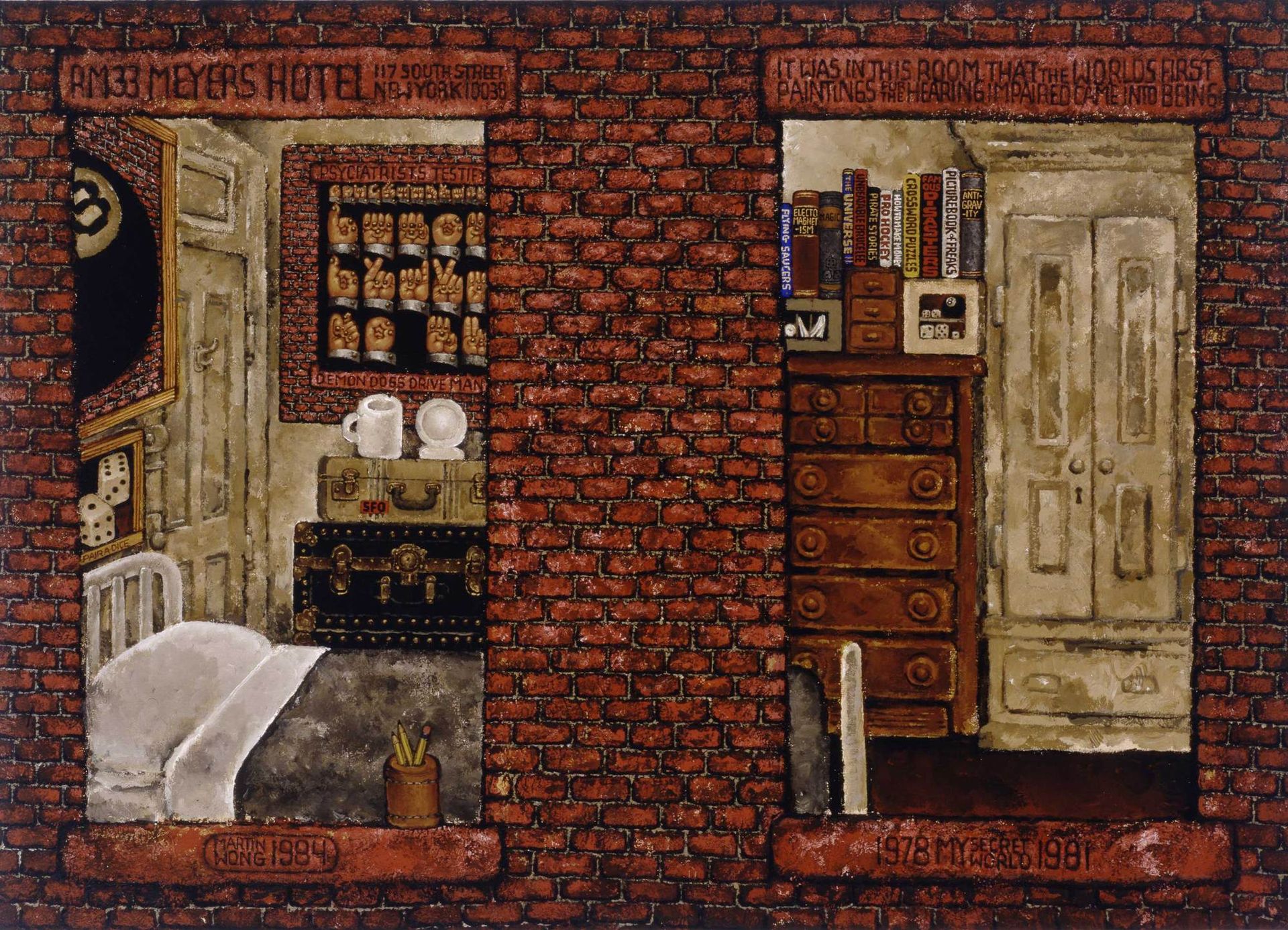In the 1980s, Martin Wong painted the world around him: on the Lower East Side of New York, crumbing buildings, dingy facades, gay love in the ruins.
He also archived that place and time, and the work of his peers, preserving the memories of a generation that died young, as he himself would at the age of 53. (His archive is now at New York University.)
That work and those artists were under threat, first from arson and addiction, and then later from HIV. Wong was a witness to their dramas. In the 1990s, his tenement apartment was a museum to a moment that had passed. He stashed work by casualties like Keith Haring and Jean-Michel Basquiat in his shrine filled with relics.
The exhibition Martin Wong: Human Instamatic at the Bronx Museum of the Arts suggests the journey of an untrained but gifted painter from home and back. His paintings are his diary.
The journey begins deep inside this conventionally-installed show, past galleries that present Wong's work in a generic chronology. In an alcove, we see serene self-portraits by a young man who grew up in San Francisco and then went to college in Eureka, California. Wong, who studied ceramics, would paint portraits on the street for $7. The self-portraits on view suggest a shy, sensitive boy, and exposure to Picasso and Matisse—nothing so unusual for any student of art. Yet one self-portrait, Untitled (Self Portrait in Red Shirt, early 1960’s)—poorly reproduced in the show’s catalog—has the serene composure of a Picasso Rose period picture. Wong was no more than 17 when he painted it. His go-to self-portrait as an adult showed him smiling, with a Fu Manchu moustache and a cowboy hat.
In the show’s first gallery, you see My Secret World (1978) a painting of Wong’s first New York apartment, viewed through a window. You get the sense that Wong was finding his private way, which might explain his comics-inspired paintings of hands that formed letters in sign language.
Philip Guston and Robert Crumb haunt those pictures, and there’s more than a touch of Guston in Wong’s views of Lower East Side decay, where bricks sometimes appear with layers of soot and faded advertising, sometimes as ruins of a building torched by arson. Those of us who were around back then will recognize those places.

For Wong, those scenes with firemen can also be fleurs du mal fantasies. The conventional civic fantasy celebrates the brave, brawny first responders. Wong’s paintings add a smoky, erotic and unapologetic allure to them. His cartoonish 1988 painting Big Heat, which shows two firemen kissing in the ruins, was a profane tribute to these objects of desire, a warmhearted way of sharing secrets with the outside world: buildings catch fire, friends contract HIV and even firemen aren’t immune to the seductions of their surroundings.
(The painting’s presence in a gallery devoted to AIDS in the Whitney’s inaugural show at their new building kept that space from feeling like a funeral parlor decorated by Robert Mapplethorpe.)
For Wong, firemen were generic male figures, as boxers and soldiers were for George Bellows. He would paint them again and again. He would also paint artists in his neighborhood, like the poet Miguel Algarín and Wong’s lover and collaborator, the playwright Miguel Piñero.
Piñero, an ex-con, gave Wong another subject: prisons, severe and austere from the outside, but with angelic, muscular men inside. Wong heard a lot about incarceration but never spent time in prison. Visitors to the show from the Bronx, where mass incarceration hits hard, may know prison's inside truths better than he did.
Yet fantasy stopped at the door, you might say, in Wong’s vividly realistic paintings of the armored facades of stores and churches, as in Houston Street (1986). If his jolly firefighters were the bawdy side of a neighborhood under siege, these surfaces were its grim dimension. Layers of paint bear a seeming infinity of marks, like purgatory or like textured abstraction. These intimidating barriers (and the monochrome still-lifes that came later) were as dark as Wong got as a painter.
In the 1990s, in San Francisco where his family cared for him, Wong turned to scenes of Chinatown. In subsequent works, you feel as if Wong is entering his own family archive, as images and memories coalesce in a celebration of warmth, even of kitsch.
Wong, likeable and generously collegial, had a tremendous spirit. The Bronx Museum show, stiff and proper, is a dutiful approach to a man who was anything but. Still, even part of Martin Wong is a good thing.
David D’Arcy is a correspondent for The Art Newspaper.
Martin Wong: Human Instamatic, The Bronx Museum of the Arts, until 14 February

